What to plant in October: 14 plants to sow and grow this month
Our suggestions for what to plant in October will ensure there's plenty of interest in your plot in the months ahead
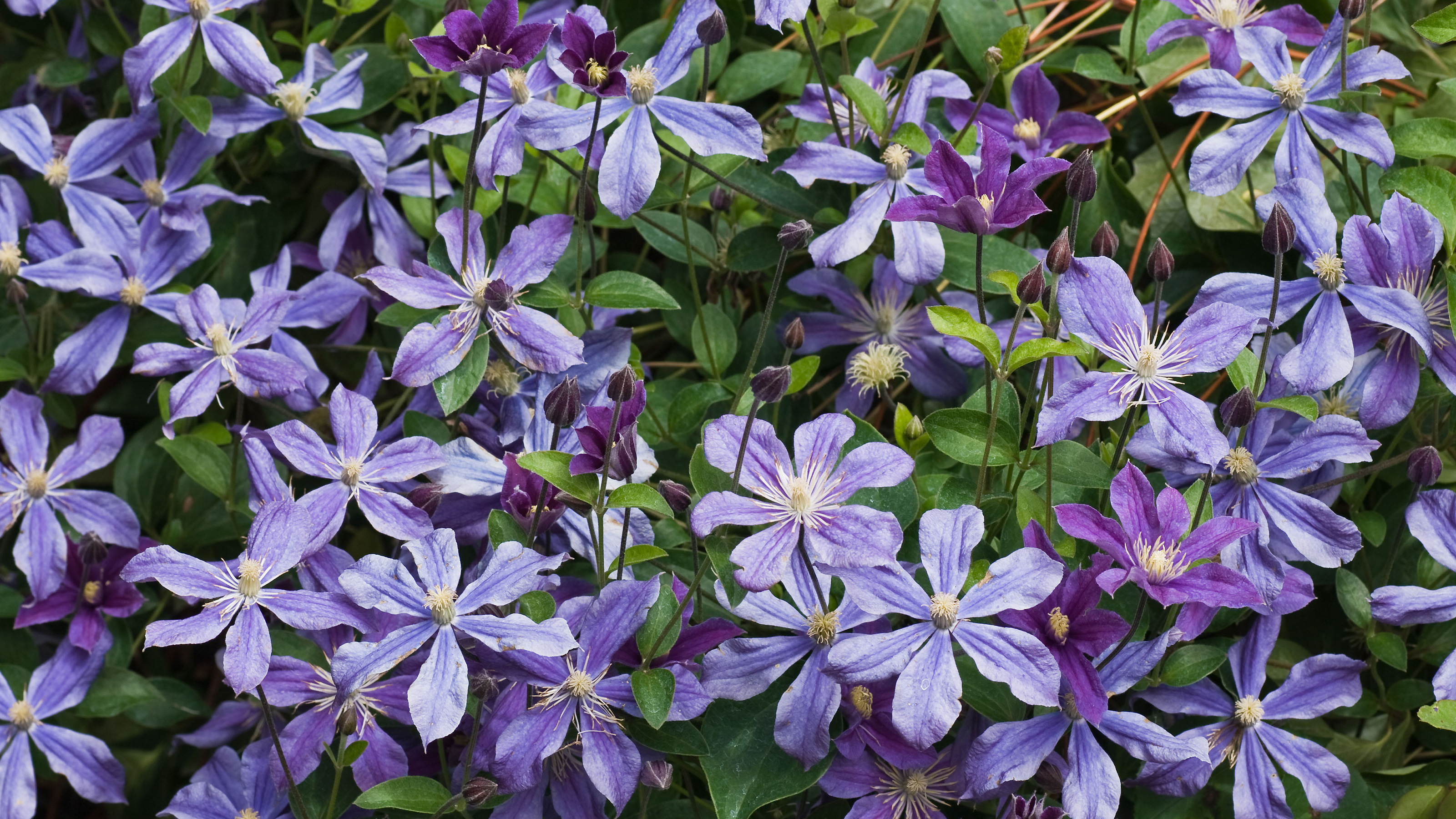

Deciding what to plant in October can lift what might otherwise feel like a bit of a dismal month. Fall has set in with a vengeance and it can feel as if there is nothing really to celebrate until Halloween at the end of the month.
So cheer yourself up by adding to the garden. In most regions there is still time to plant before the really cold weather sets in and you also have the added bonus of bare root planting season to enjoy. This stretches from the end of this month until spring and gives you the chance to add ornamental and fruiting trees and shrubs to your garden without breaking the bank.
October planting also lends itself to perennials and ornamental grasses that will get established and go dormant for winter before coming back to life next spring. Biennials such as sweet williams and foxgloves can also be planted now for next year.
So don’t be downhearted – get into the garden, and get planning and planting! Put in the work in October by working out what to plant when and you will reap the reward in the months ahead as your flower beds spring into life when the warmer weather returns.
Create a stunning garden with our ideas for what to plant in October
With suggestions for plants to get in the ground and seeds to sow now, these 14 options for what to plant in October will ensure your garden is better than ever next year.
1. Roses

Roses such as this yellow climber 'Fruehlingsgold' can be planted as bare root shrubs this month
We are on the cusp of bare root season when trees and shrubs can be bought small, cheap and dormant, ready to grow when the weather warms up again next spring.
Roses often come top of the pops in gardeners’ ‘favorite plant’ survey so if you are keen to add more roses to your plot now is the time to plant bare root roses in your garden as they are widely available.
Apart from their delicious blooms and scent, roses are pretty versatile and you can find one to suit every garden, be it one of the best climbing roses, a rambler, shrub rose or dwarf variety suitable for a patio planter.
They do best in a sunny spot and are unlikely to flower as well in shade, and their soil should be free-draining and enriched with lots of well-rotted compost or manure as they are hungry plants.
Top tip: To get lots of eye-level flowers on rambling and climbing roses, make sure the blooming stems are tied horizontally to their supports once the plants are a couple of years old and are starting to flower well.
2. Crab apple
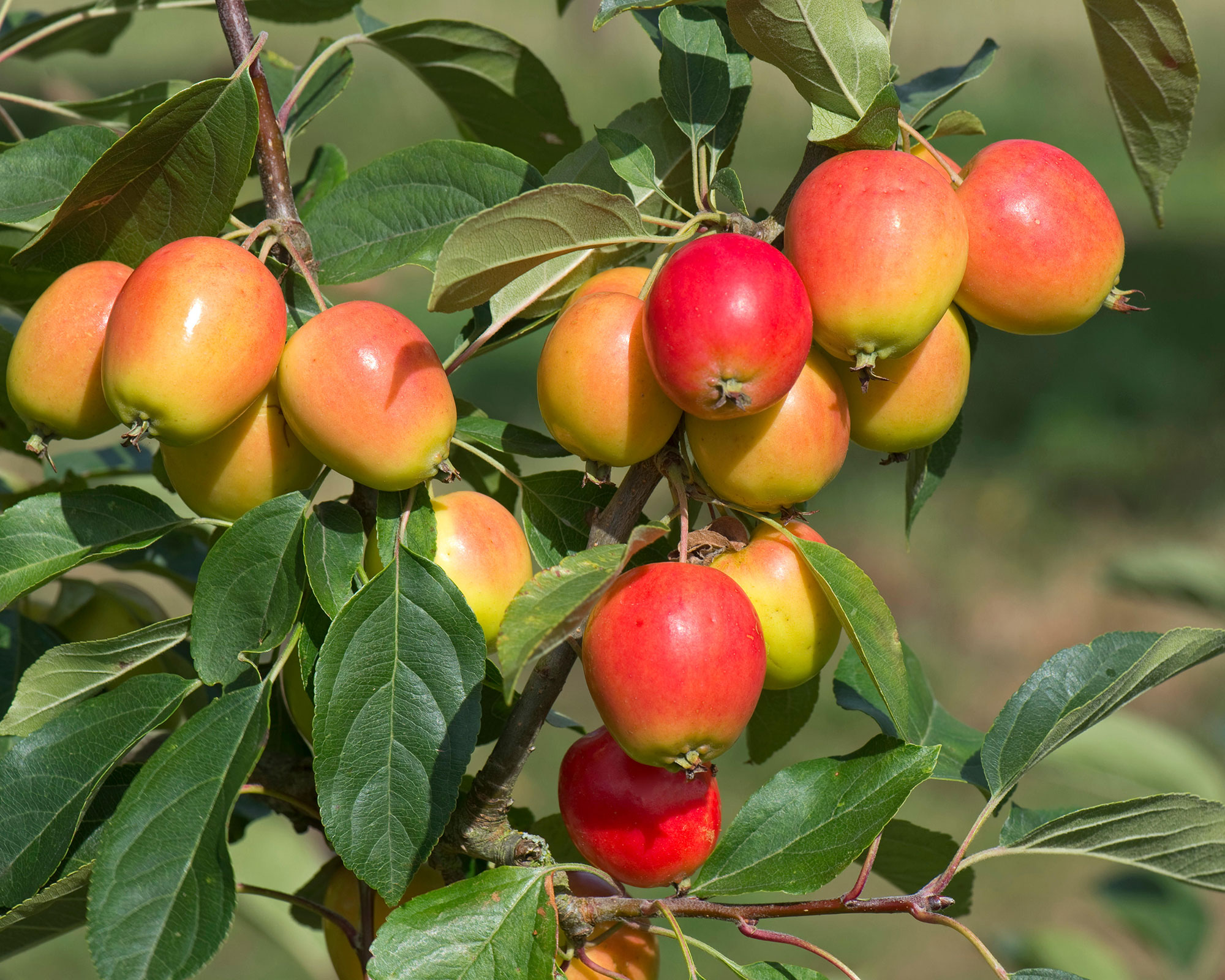
Colorful fruits of a ‘John Downie’ crab apple
While crab apple trees are infinitely beneficial when growing other apples as they are general pollinators, they are also well worth adding to an ornamental garden.
They are relatively compact so make a great tree for small gardens, and often grow in a graceful shape. They also give something to the garden through every season of the year.
In spring they are dressed in sweet smelling pink-and-white blossom, then little apples that are either red or yellow appear in late summer and the leaves often turn glorious shades of red and auburn in autumn.
Then once they drop, you are left with an attractive skeleton of branches – perfect for draping with strings of festive lights at Thanksgiving and Christmas!
Best of all, crab apples are low maintenance trees and happy in a range of soils, though they will do best if it is free-draining and in a sunny spot, though they can cope with partial shade.
Top tip: Crab apples are good for birds and wildlife and their small fruits make extremely tasty jelly.
3. Sweet Williams
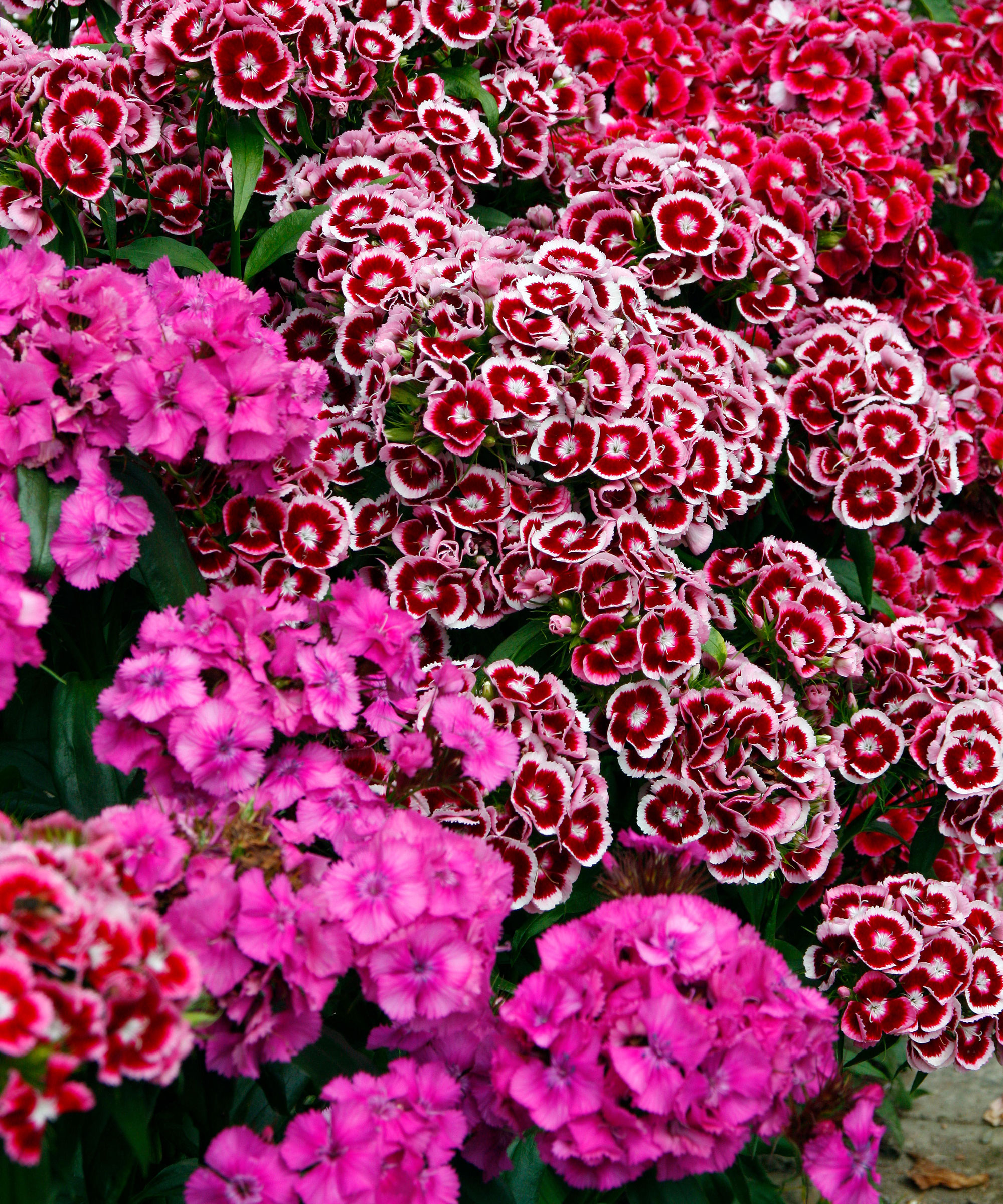
Mixed blooms of spring and summer-flowering sweet williams
If you have gaps in your garden borders or pots that need filling with plants that will guarantee a colorful show late next spring through the early summer, look no further than sweet williams.
A traditional cottage garden plant famed for its pink and white blooms that cluster above slim pointed leaves they are incredibly easy to grow and will also self-seed, giving you color for years to come. Low growing and with a sweet peppery scent, they also work well as a cutting flower as they have a long vase life.
Plant sweet williams in sunny, well-drained soil, though they will tolerate light shade and also grow well in containers. Plant them now when the soil is still warm from summer, and their roots will start to grow and establish in the ground.
They will sit through fall and winter, though they may need mulching with well-rotted compost or manure if we have hard frosts, and will start to grow again early next spring before flowering later in the season and into early summer.
Top tip: Sweet williams are perfect for attracting pollinators including bees and butterflies so are an ideal addition to a wildlife garden area.
4. Perovskia atriplicifolia (Russian Sage)
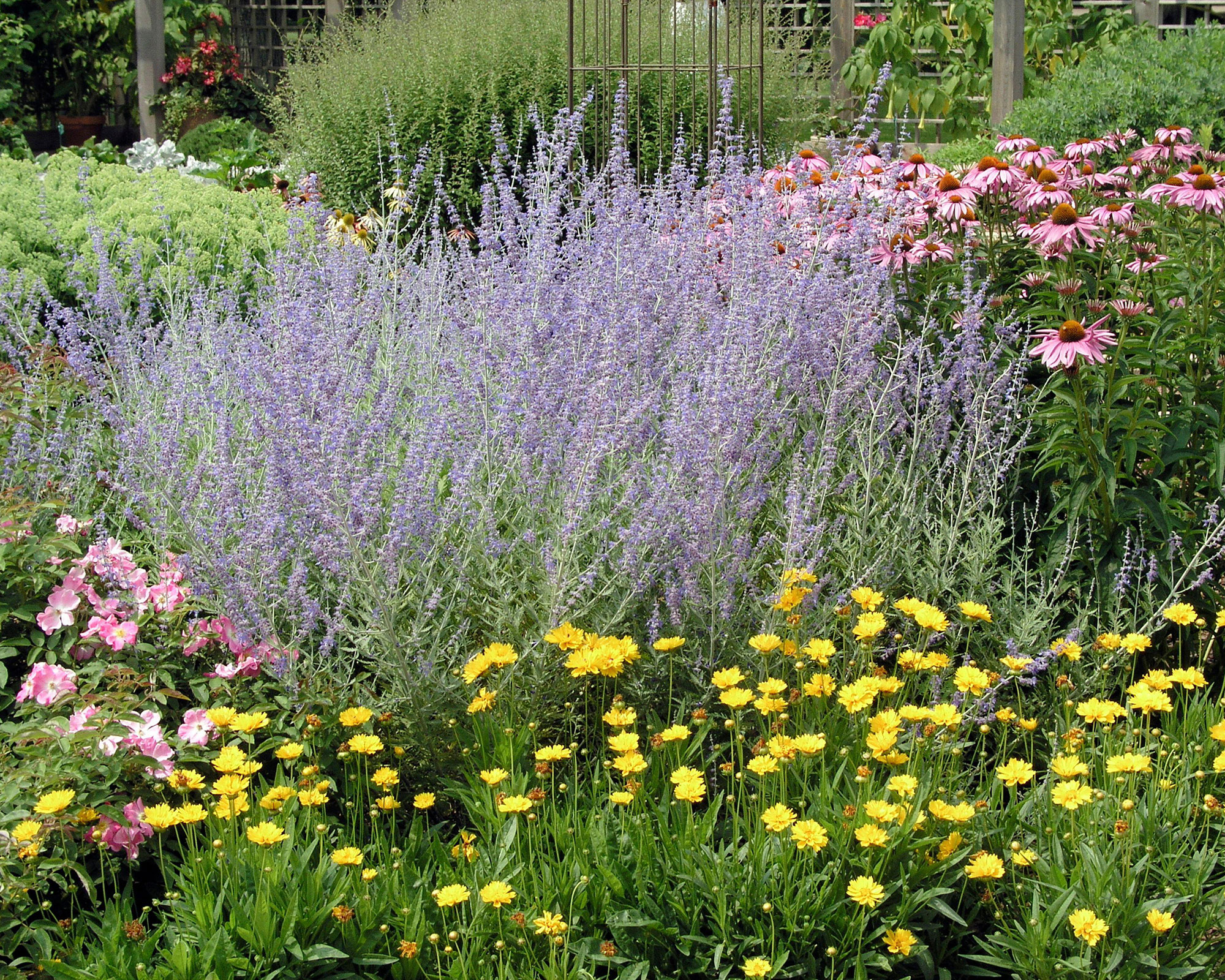
Russian sage adds height and scent to mixed late summer and autumn borders
If you are looking for an elegant shrubby plant that will add grace and color to your border in late summer and autumn and be a magnet for beneficial insects next summer, look no further than Perovskia atriplicifolia or Russian sage.
Growing to a final height of 4ft (1.2m), the plant is made up of several frondy branches holding small, sage-scented leaves and, through late summer and fall, a wealth of delicate mauve flowers.
A tough character, it thrives in any sunny, well-drained spot but also deserves a place in modern planting schemes and gravel gardens. Grow it alongside grasses and other architectural perennials such as globe thistles, echinacea and eryngiums.
Top tip: To keep your Perovskia atriplicifolia shapely and flowering well each year, prune it back hard in mid to late spring to create an attractive woody framework.
5. Clematis

Clematis viticella 'Venosa Violacea' is a stunning variety with bold purple-and-white flowers
If a bare wall is crying out for color, clematis are an easy and eye-catching way of providing exactly that.
If you want to learn how to grow clematis successfully, then it's best to plant them now when the soil is warm and damp. They will really thrive in a spot where they get a good amount of sun on their top growth, but the soil gets more shade.
Clematis should be planted deep, so make sure the crown of the plant, where it emerges from its pot of compost, is at least 3-4in (7-10cm) below ground level. This encourages them to put on more subterranean growth which leads to stronger plants and a faster coverage of whatever they are growing against.
All clematis varieties thrive in free-draining soil and also need plenty of watering while they get established. They also like their roots kept cool, so covering the planting area with a flag stone or a couple of bricks will help.
Once they are planted, reduce any top growth to 6in (15cm), which will promote the development of more shoots when they start to grow again in spring.
Top tip: Although clematis like sun on their top growth, too many harsh rays can cause their blooms to bleach.
6. Spring bulbs

Dwarf varieties of spring bulbs, plus crocuses and snowdrops, look stunning growing through a well-tended lawn
If spring bulbs were on your list of what to plant in September and your beds and borders are already jam-crammed full of them but you still hanker for more, why not consider planting them as part of your lawn ideas instead?
Planting bulbs in this way is called ‘naturalizing’ and it's a simple way of planting that packs a beautiful punch.
It is usually used for smaller and dwarf varieties such as crocuses, mini daffodils and tulips, drifts of snowdrops and snakehead fritillaries, but the taller blue spires of Camassia also look stunning poking through the grass, especially among fruit trees.
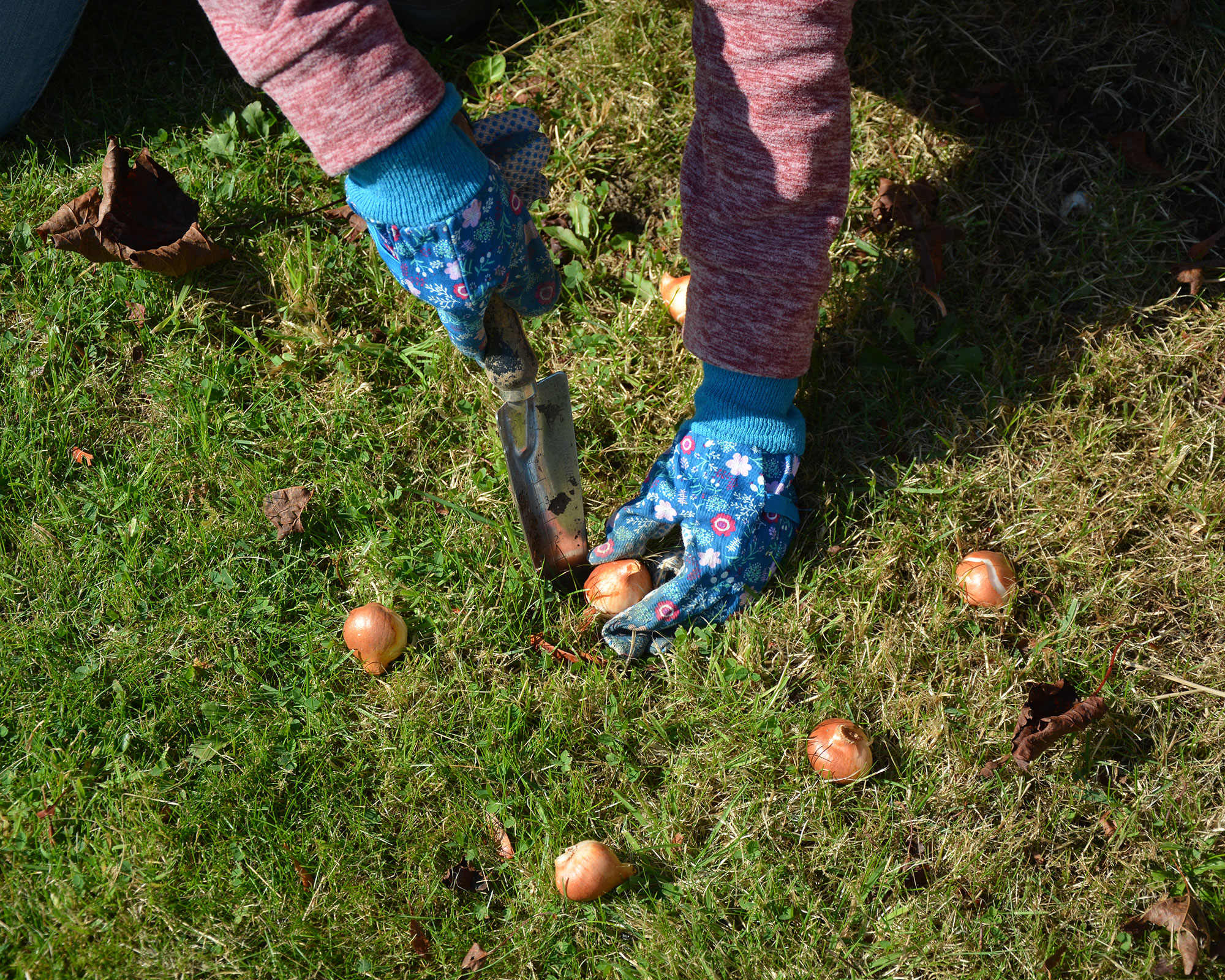
Drop a handful of bulbs onto the grass and plant them where they fall for a natural-looking display
Planting bulbs in your lawn is neither complicated nor messy. They need to go in the ground at three times their own depth, as you would in a bed or pot, and this is easily done with a sharp bulb planter.
You are aiming to create as natural a look as possible, so start by gently throwing a handful of bulbs – one variety or a mix – onto the grass and planting them where they fall.
Remove a plug of earth and grass and pop each bulb in its own hole, pointed end up. Then infill with soil, replace the cap of grass and firm in. Water well, even when rain is forecast. The bulbs will mature and multiply over the years to create a large and colorful spread.
Top tip: Squirrels, badgers and foxes love a freshly planted bulb, so pin wire mesh over the planting site to keep them safe.
7. Biennials (including wallflowers and foxgloves)

Wallflowers bring rich colors and a delicious peppery scent to the spring garden
Biennials are plants that germinate and develop leaves one year, then flower, set seed and die back the next. Add them to your list for what to plant in October and their seedlings will have time to get established and put on some root growth before the cold weather hits.
Biennials include sweet rocket, honesty and forget-me-nots. They are easy-going plants and most can be potted up and overwintered undercover then planted out when the soil starts to warm next spring.
While the soil still retains some summer warmth, you should also plant out any hardy biennials you sowed and grew earlier in the year.
Bareroot wallflower plants – another biennial – are usually widely and cheaply available now in garden centres, so buy a bunch for early spring colour and scent.
Top tip: Honesty plants develop deep tap-roots and do not transplant well so for the best results, sow them directly where you wish them to grow.
8. Hellebores

The glorious purple petals of Helleborus niger 'Washfield Double'
Hellebores, widely known as Lenten or Christmas roses, are one of the first perennials to flower in early spring, and also one of the most beautiful.
Most varieties thrive in light shade that gets some full sun at some point during the day, and they like enriched, free-draining soil.
If you want to learn how to grow hellebores and you have heavy clay soil, make sure you dig in lots of well-rotted manure or compost and a little grit before planting.
If you have areas of deeper shade that need lightening, plant all-green Hellebore foetidus, or stinking hellebore, as they are happy in darker conditions and offer a valuable supply of early nectar for pollinators.
Hellebores are also one of the best winter plants for pots, so they're a great option if you want to add a splash of color to patio containers during the colder months.
Top tip: In fall, remove old and tatty hellebore leaves to make room for new foliage growth and the buds when they start to emerge.
9. Perennials
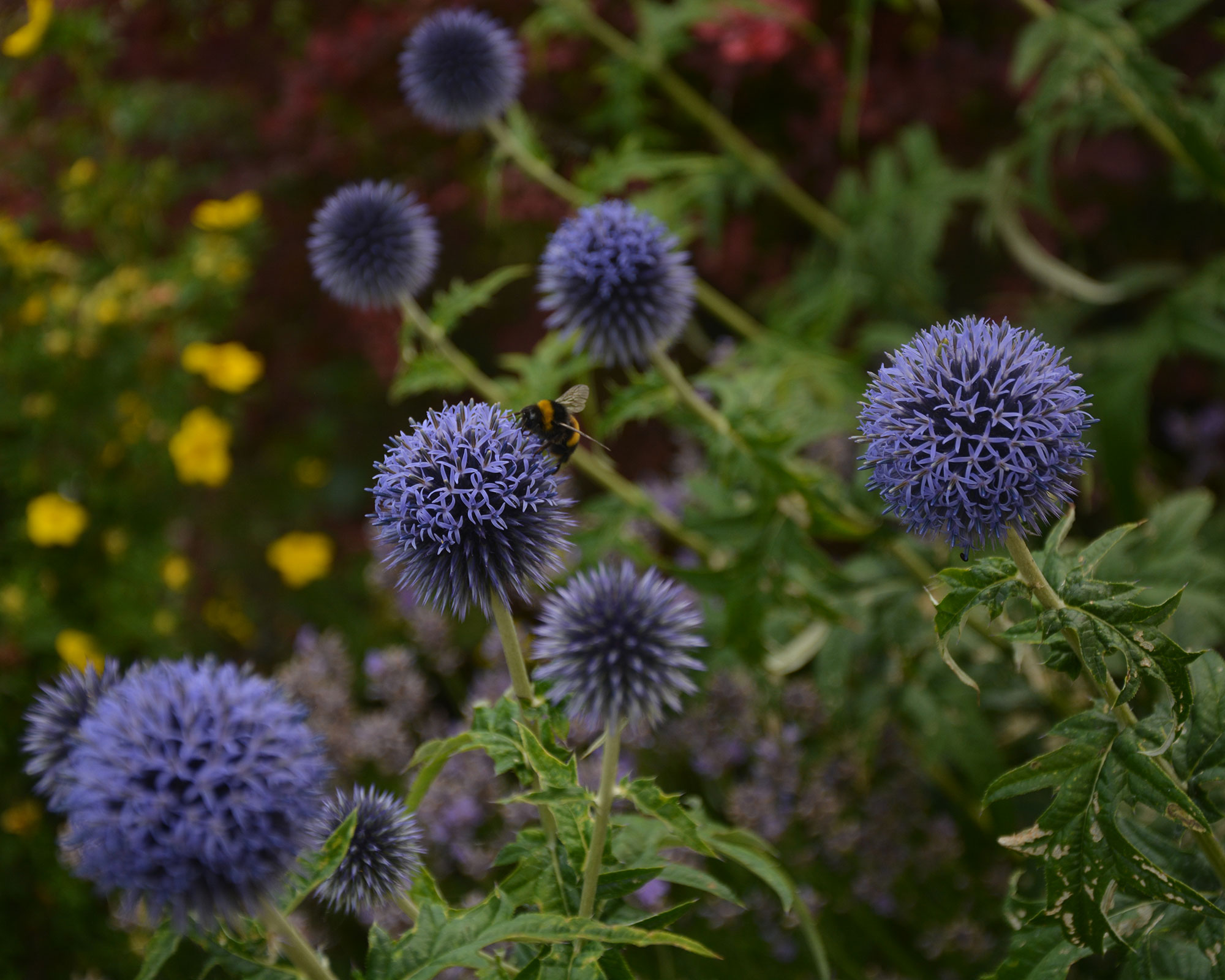
The warm, damp soils of October are perfect for planting perennials including globe thistles
Hellebores are not the only perennials on the list of what to plant in October. The coldest months are not yet upon us, so any perennial included in your garden border planting ideas now will still have time to stretch out its roots and settle in before it goes into winter hibernation.
For this reason, October is the perfect time to look around your garden, see what gaps you have in your flower beds and decide what to fill them with.
When planting a perennial, such as agapanthus, first of all stand its pot in water so the roots get a good drink and it's easier to slide out the rootball without slender feeder roots snagging on the sides of the container.
While it is soaking, excavate the planting hole to the same depth as the plant’s pot and slightly wider. If soil is heavy or clay, score the sides of the hole with your fork to improve its drainage and prevent it becoming a waterlogged ‘bucket’.
Add some well-rotted compost or manure to the bottom of the hole and sprinkle in some bone meal, which will break down through winter and nourish the roots next spring.
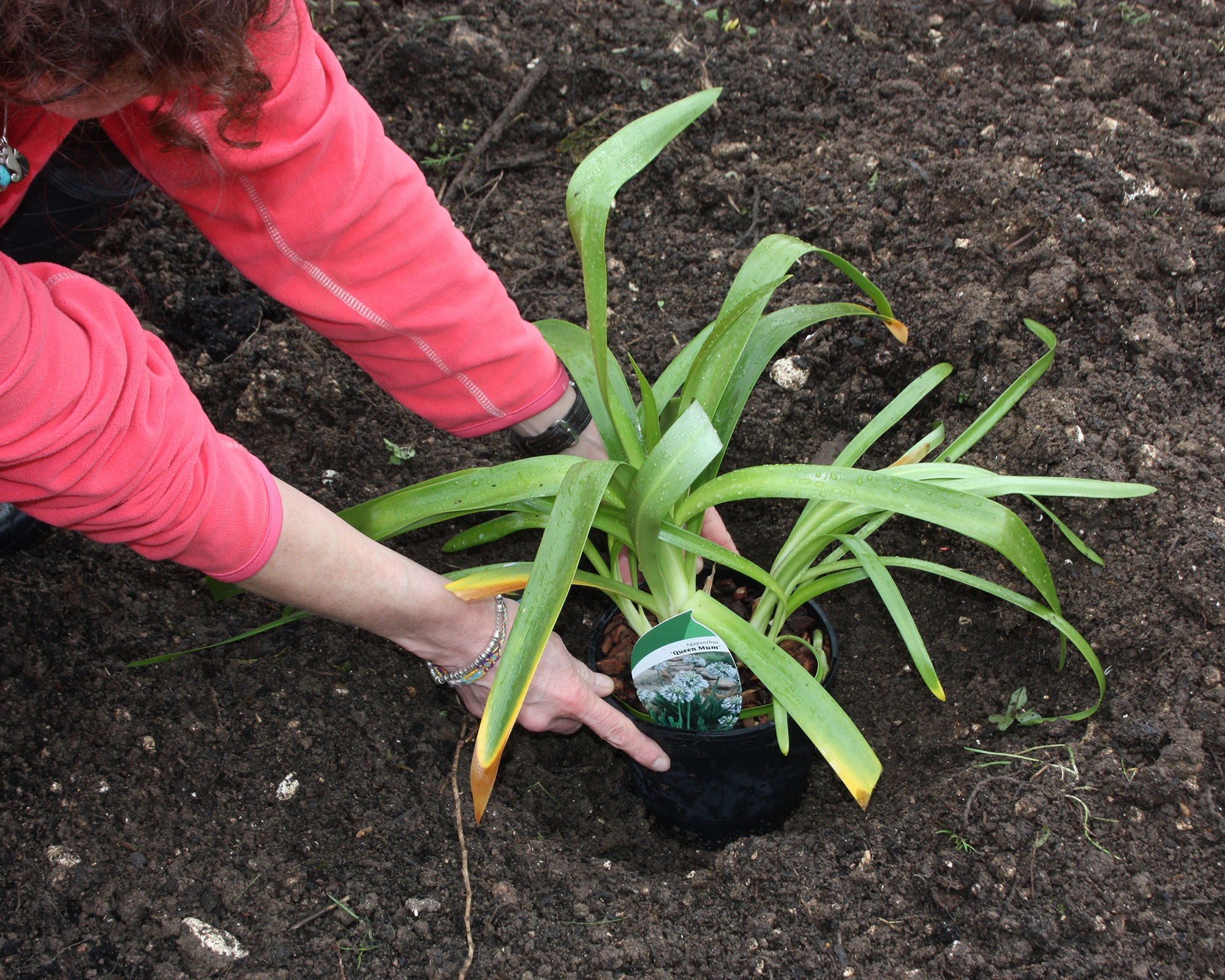
Making sure a perennial agapanthus is planted at the right depth
Perennials should be planted at the same depth as the pot you bought them in, so check your excavation is deep enough by standing the plant in it while it's still in its pot.
Then take the plant from its pot and carefully tease out any roots that are circling the others or tangled, and place the plant in its hole.
Infill around the rootball with soil and compost, firming it down as you go, then water well and mulch the root area with a generous layer of well-rotted compost or manure. If you want to make your own compost, we've got plenty of tips on composting in our guide, too.
Top tip: When choosing a plant, always read its label before purchasing to make sure you have the right conditions and space for its optimum growth. It will fail to thrive if it is in the wrong spot or has too little space, and you will have wasted your money.
10. Wildflowers

Prepare the ground in autumn for a stunning wildflower lawn next year
Wildflower lawns, or patches of lawn, are growing in popularity and are increasingly important for our beleaguered insects and wildlife as we continue to build all over their natural habitats.
If you are considering how to plant a wildflower meadow next year, then fall is the time to start preparing the soil.
Wildflowers do best on poor soil so don’t give your lawn its traditional autumn feed, if you usually do this, but do rake out dead grass and moss and don’t leave lawn trimmings lying on the ground as they will enrich the soil.

Yellow rattle plants weaken grass and help wildflowers gain a foothold when they are sown in spring
The next step is to sow the seeds of yellow rattle, a semi-parasitic plant that weakens the grass roots, thus helping wildflower seeds or plug plants get established when they are sown and planted next spring.
The seeds are widely available online and yellow rattle in itself is an attractive plant with pretty serrated leaves and cheerful yellow flowers that insects love.
Top tip: Don’t forget to keep raking up fallen leaves that land on your lawn as they block sunlight and can harbor pests and disease. They don't have to go to waste, however, as you can learn how to make leaf mold and turn them into a rich soil conditioner for use on your beds and borders.
11. Hollyhocks

Statuesque hollyhocks bring late summer and fall color to the garden
Hollyhocks make a beautiful addition to classic cottage garden ideas, introducing statuesque height and color to any planting scheme.
I've successfully grown hollyhocks from seed this year and I am still completely thrilled by the success. They brought late color to the garden, flowering from August well into fall, when I had to stake them up against the first storms of autumn.
Flushed with my success, I am sowing more seeds now, so the seedlings have time to germinate and grow large enough to be planted out earlier than this year’s plants, hopefully flowering earlier as a result.

Sowing hollyhocks in a tray of compost
Once the seedlings have germinated and grown large enough to handle carefully – usually when their small, round germination leaves have been replaced by two sets of 'proper' foliage – you can transplant seedlings from their seed tray to individual pots of compost.
Fill a 3in (7cm) pot with multipurpose compost , dampen it and make a deep hole in the centre. Carefully lift the seedling's roots from its tray of compost using an old teaspoon or the end of a plant label and keep the plantlet steady by delicately holding a leaf between fingertip and thumb. Never hold the stem as it is very fragile so you may damage it.
Then pop the roots into the hole in the compost and carefully firm the compost around the stem. Keep the compost damp and the plant pest-free as it grows, and plant it out next spring when the soil has started to warm up and the frosts have finished.
Top tip: Hollyhock rust is a prevalent fungal disease, so if you grow hollyhocks, plant them away from where they have grown previously.
12. Poppies
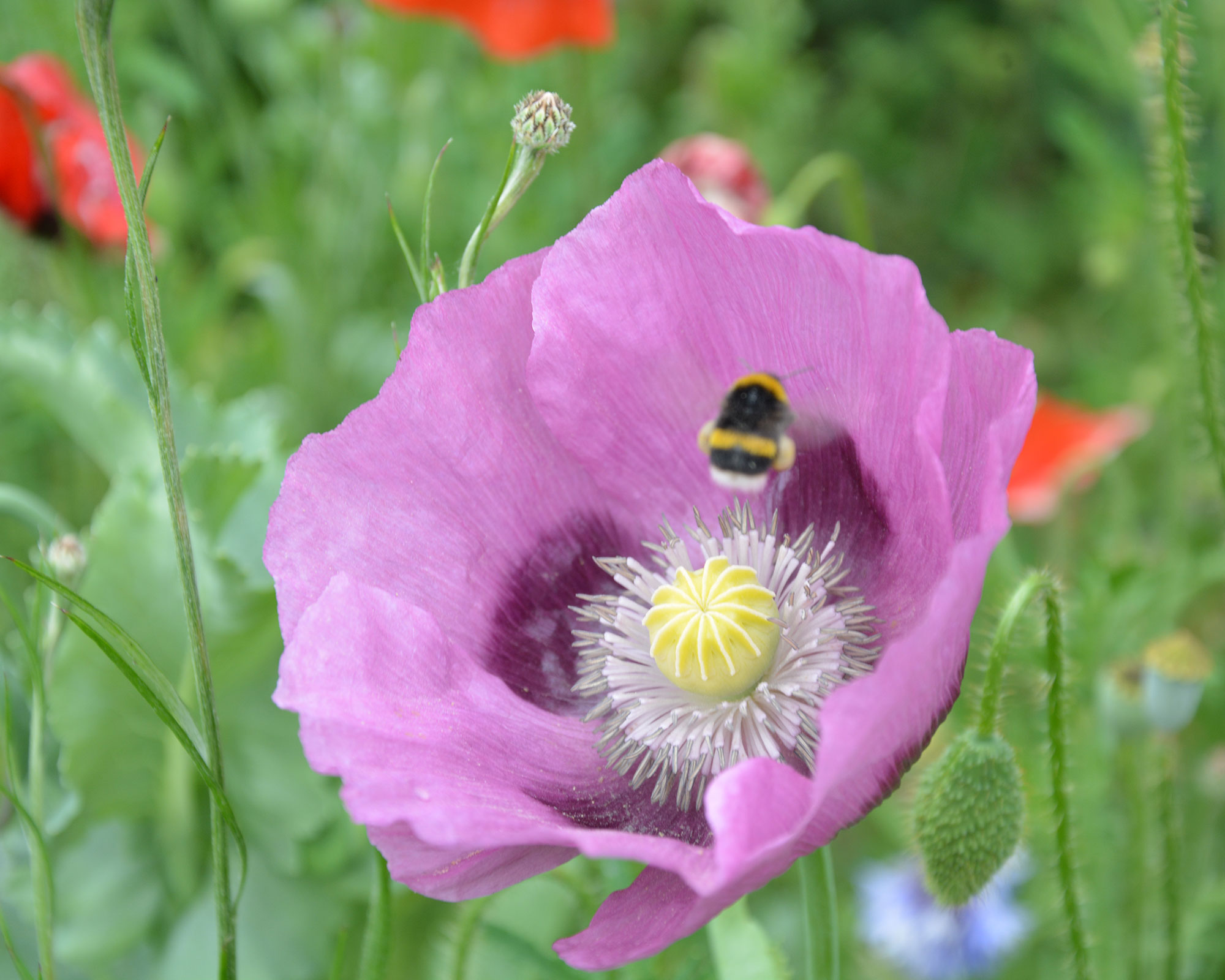
Sow hardy poppies now for elegant and exotic color next summer
One of the best ways to make a colorful statement in your garden is to add some poppies to your list of what to plant in October.
Whether they are scarlet field poppies, blowsy Oriental poppies or the slightly smaller opium poppies, which produce seeds that can be used as a delicious topping for cakes and bread, they are easy to sow and well worth growing.
Poppies are hardy, which means they can be sown now, or in spring, though seeds that go in the ground in the fall will germinate and flower earlier than spring-sown ones. A handy trick when learning how to grow poppies is to sow some in both seasons so you get a longer succession of color.
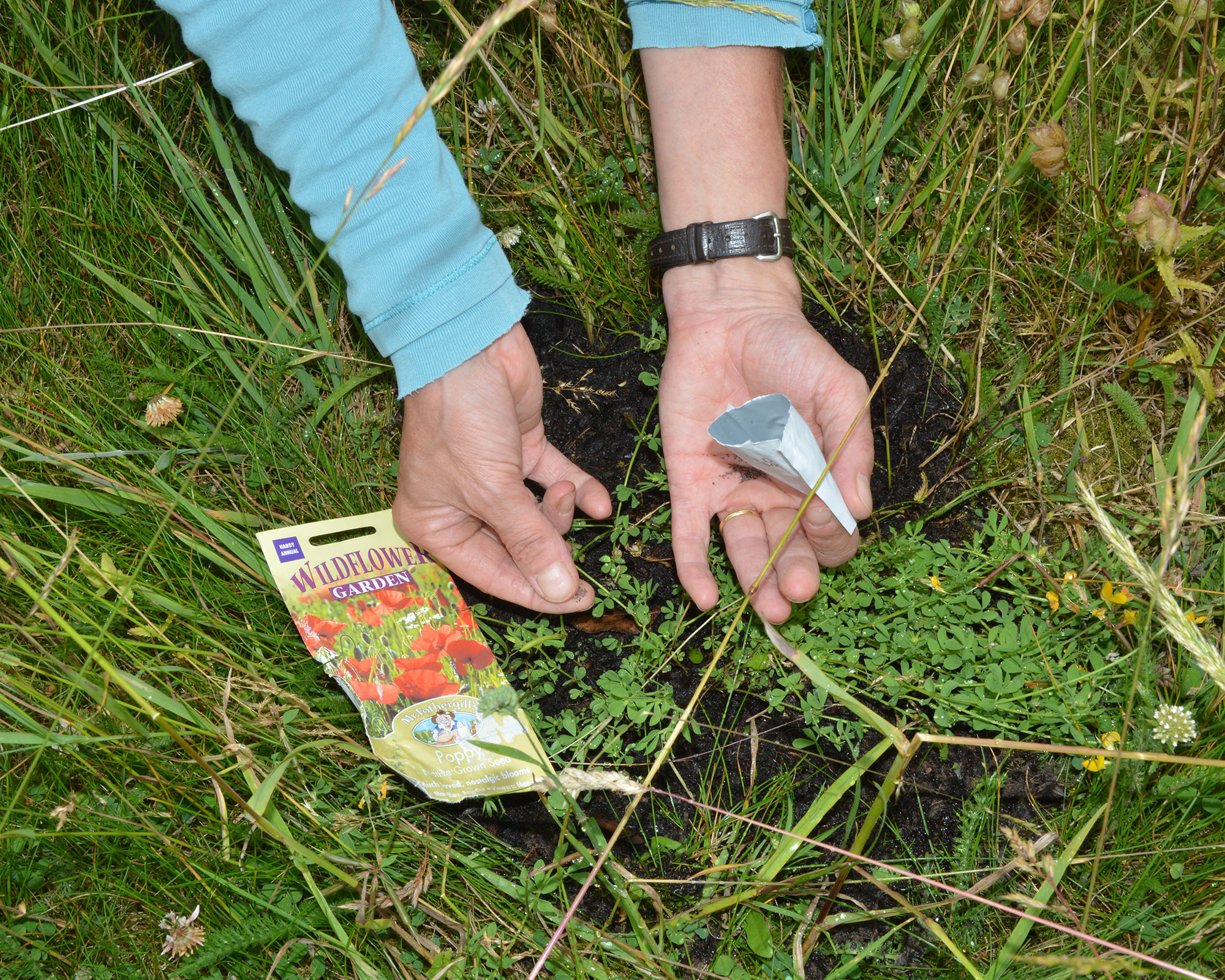
You can sow poppy seeds in a wildflower lawn
Simply create a seedbed by clearing soil of weeds, stones and debris and then raking the soil until all the lumps are broken up and you are left with a light, crumbly texture.
Water the area and scatter the seeds. If seedlings emerge too close together you can thin them out as they grow to give remaining plants enough light and air to grow well.
Cover your seeds with a little more soil, tamp it down with the back of a rake and label the spot so you don’t accidentally disturb the soil when gardening.
Keep pests, cats and birds away by laying a trellis of spiky twigs or using a deterrent spray or pepper powder.
Top tip: Poppies look gorgeous sown with other wildflower varieties such as cornflowers and corncockles. Annual grasses also set off their dramatic shapes and colors to good effect.
13. Calendula
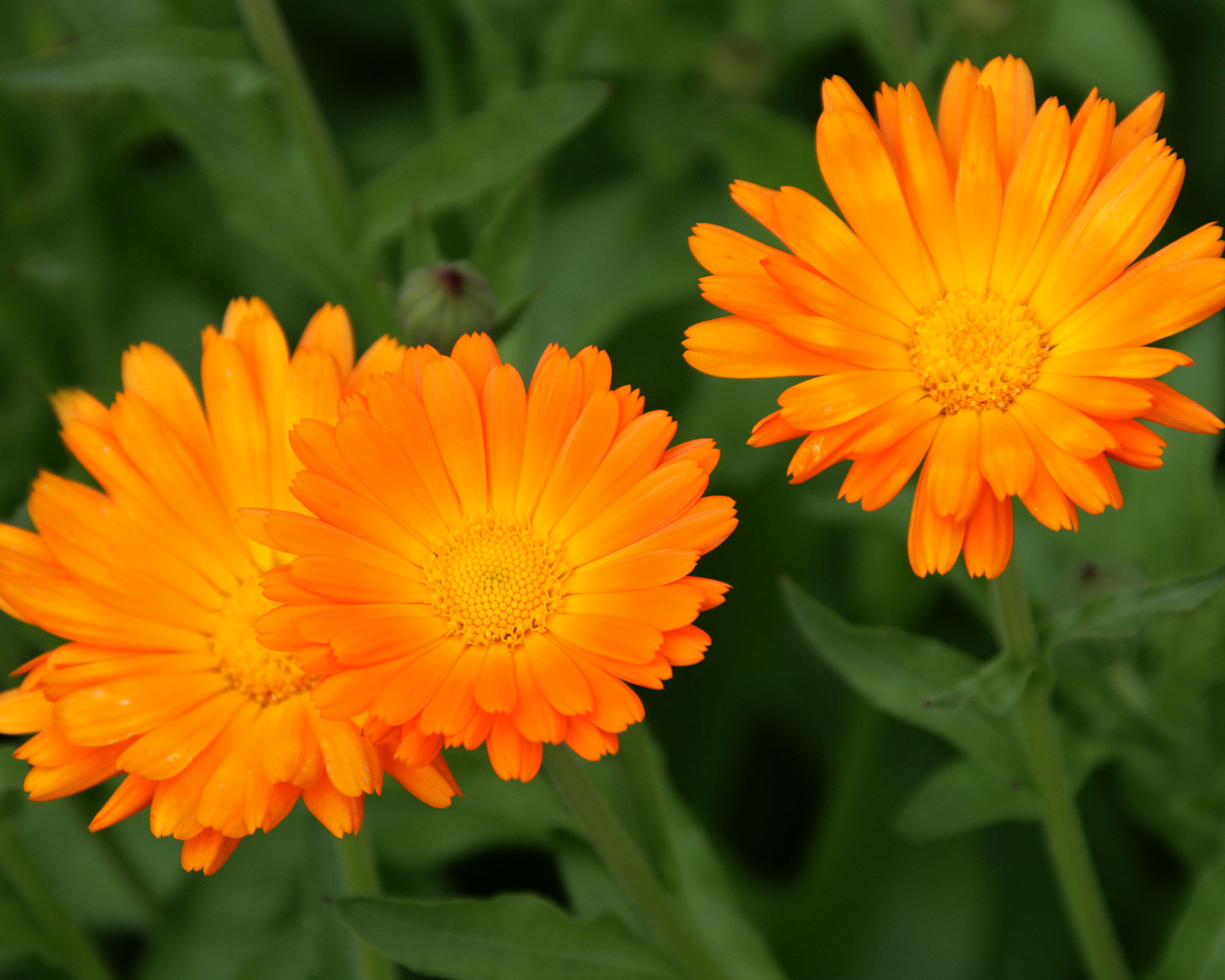
Joyful calendulas are a traditional and informal way of brightening up a garden
Calendula, also known as Scotch or pot marigolds, are fabulous hardy annuals that bring a burst of brightness to borders and containers.
We have one growing in a sheltered area of the garden that has been flowering for the past 18 months – right through the cold of winter and well into this summer! The many calendula varieties come in an array of shades, from eye-popping orange to soft cream and deep red.
An added benefit of learning how to grow marigolds is that their flowers are edible, and their petals have been used to decorate dishes for centuries and as a colourant for butter and cheese.
For a long flowering season, sow them now and again in spring in well-prepared soil in a sunny spot. Thin the seedlings if they are growing too thickly.
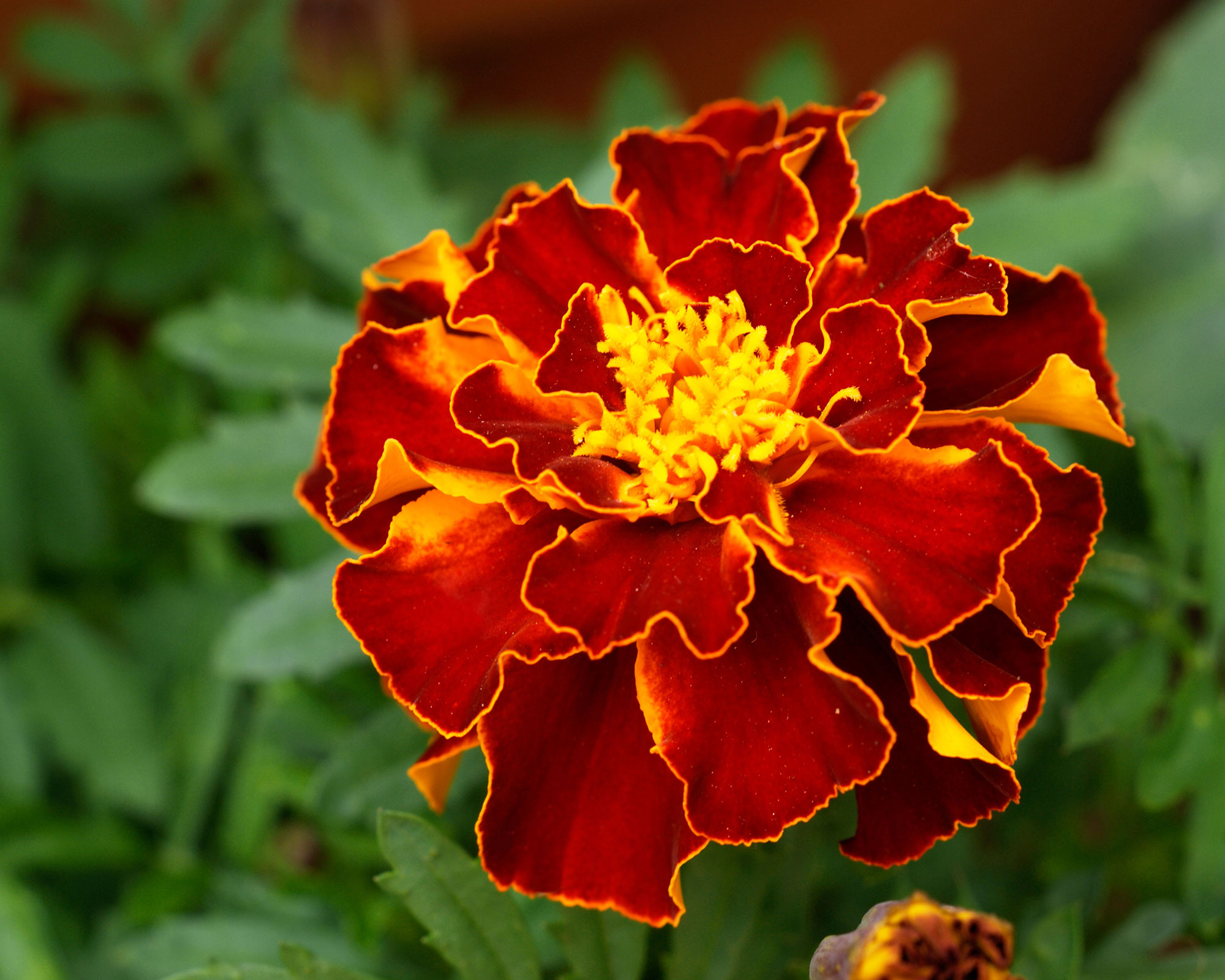
Tagetes or French marigolds are not hardy and should be sown undercover in spring
If you want to grow Tagetes, the frilly French marigolds, they are only half-hardy and are best sown in pots undercover in spring and planted out once the weather has warmed up and frosts are a thing of the past.
Top tip: Plant a few Tagetes around your vegetable patch as their smell has been scientifically proved to deter whitefly, therefore protecting your crops from this pest. There's plenty more suggestions for beneficial planting combinations in our guide to companion planting, too.
14. Aquilegia
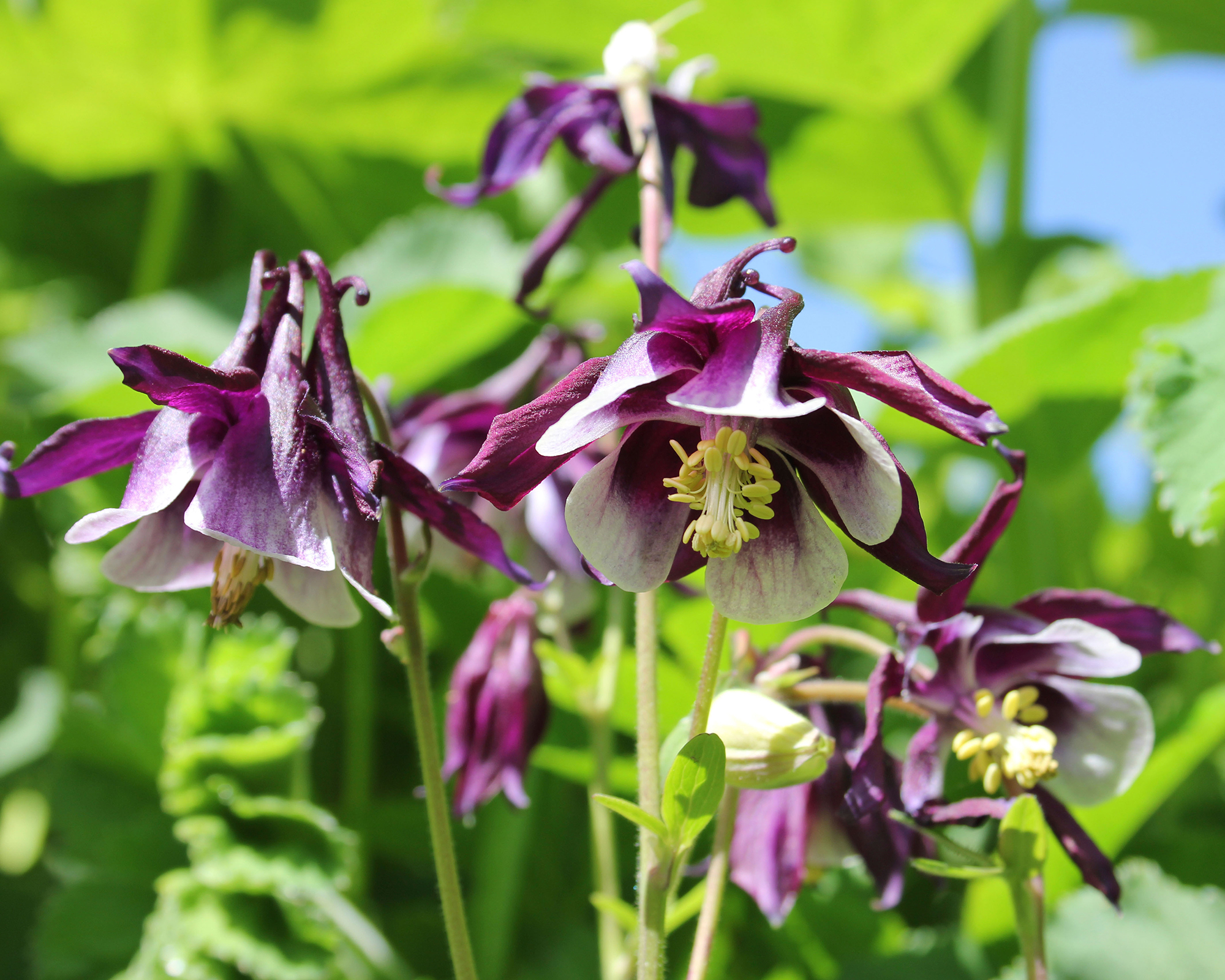
Aquilegia are brilliant at bring color to your garden in May and June
Aquilegia (also known as columbine and granny’s bonnet), are one of the most varied and diverse of summer flowers, appearing in a wide range of colors and shapes. They cross-breed easily and the end results are plants in a dazzling array of shapes, stem length and colors, from cool cream and green to vibrant reds and purples.
Best of all, columbine care is easy as they are simple to grow, and happy in all soil types, as long as they have some sun and get enough water. They also self-seed remarkably easily, so once you start growing them, they will be with you for the foreseeable future!

Scatter aquilegia seeds thinly onto damp seed compost
For the best results with this October gardening job, sow them in trays of seed compost and germinate them on a light, warm windowsill. If they fail to sprout, pop the seed tray in the fridge for two to three weeks, as this ‘tricks’ the seeds into thinking they have been through winter, so they germinate when they are brought back into room temperature.
Grow on the seedlings and plant them to where you want them to flower next spring when it starts to warm up.

Ruth is the gardening editor of Amateur Gardening magazine and spends her working days carrying out, writing about and photographing the tasks the readers should be carrying out each week, as well as testing many of the new products that arrive on the gardening market. She is horticulturally trained, with a qualification from the Royal Horticultural Society.
